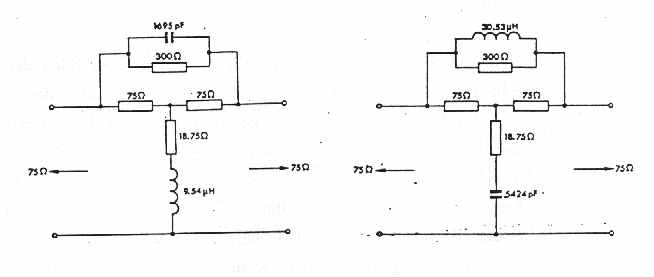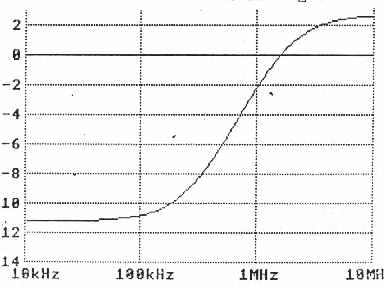
ATV CCIR FILTERS
There is a Standard for FM ATV Pre_emphasis and De_emphasis of the video frequency response. This enhances the higher frequency of transmit and reduces it back again on the receiver. There is two standard circuits but they must see in and out a 75ohms termination otherwise they will give bad results. The net result is to see a better signal to noise and less group delay distortion.

In addition you need to trap out the 6MHz intercarrier sound on the RX otherwise patterning or beating will be seen on the picture usually with the Colour chrominance signal and another good reason is when used on a repeater if any 6Mhz carrier from the RX will beat with the new inserted sound carrier on the TX ending up with nasty audio beats. Ideally filter both to be sure.
Radio links usually have CCIR pre-emphasis networks in the video signal path prior to modulation and the corresponding de-emphasis networks at the demodulators. The pre-emphasis network raises the level of the hf component by 14db with respect to the lf components. There is also an overall attenuation applied so that the chrominance components do not overmodulate the transmitter. The frequency response of a pre-emphasis network is as shown below (TX). The RX is the reverse of this.

ATV chaps do not use Wave Dispersal modulation because we don't expect to get co-channel signals or cross polarized signals either.

I have just designed a new RX backend using the COMTECH tuner that first feeds into a high Z de-emphasis filter then a gain of 25db next is a 6MHz trap and then a video clamp. The good result is that we get a good -60db rejection of the sound thus less problems with the sync and video.